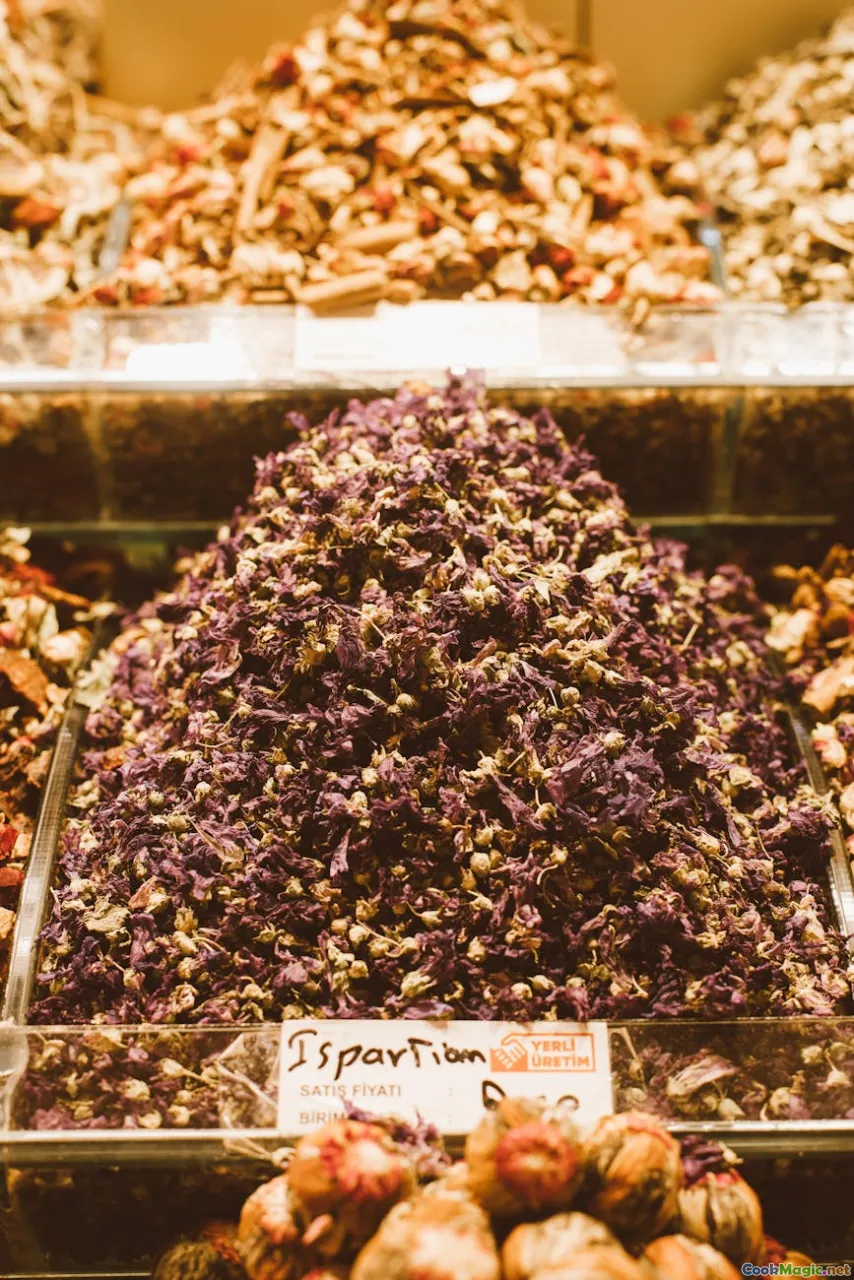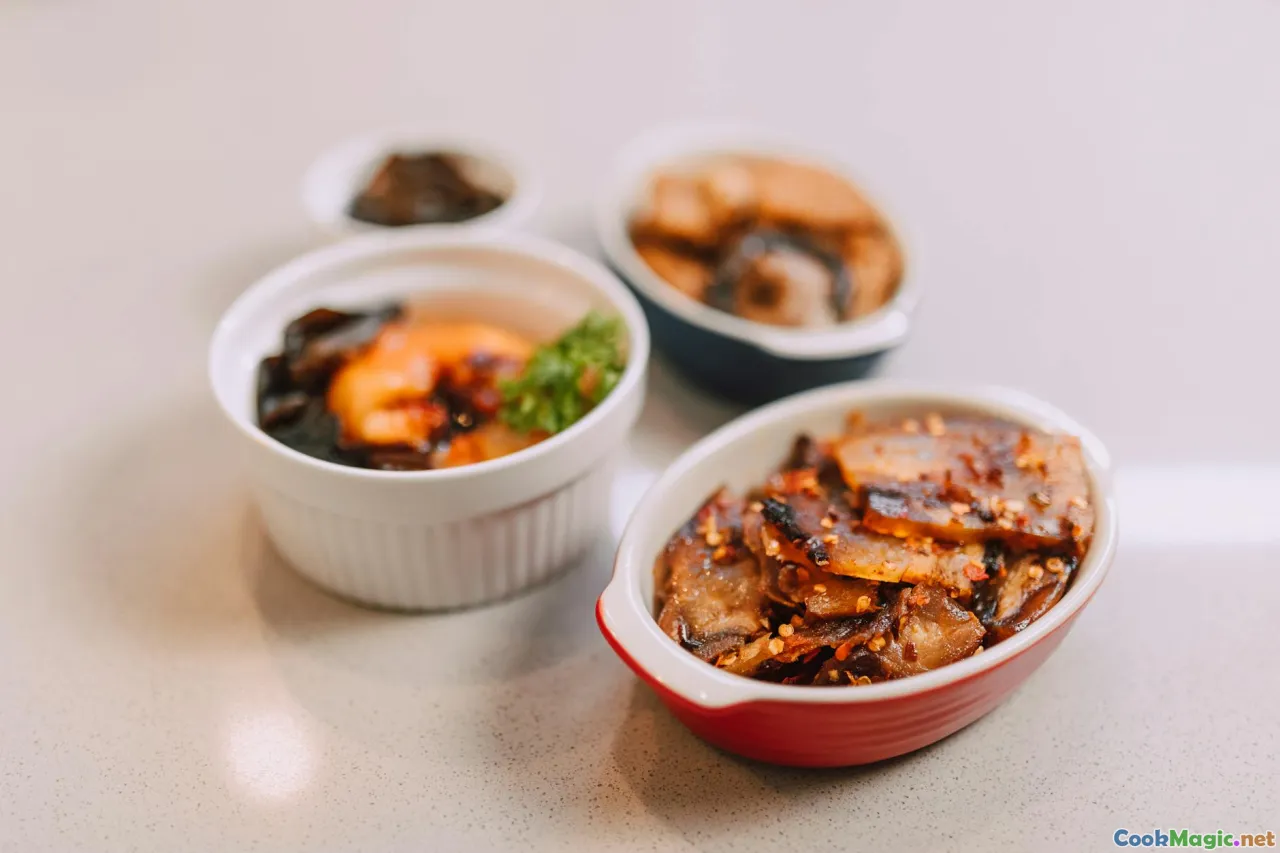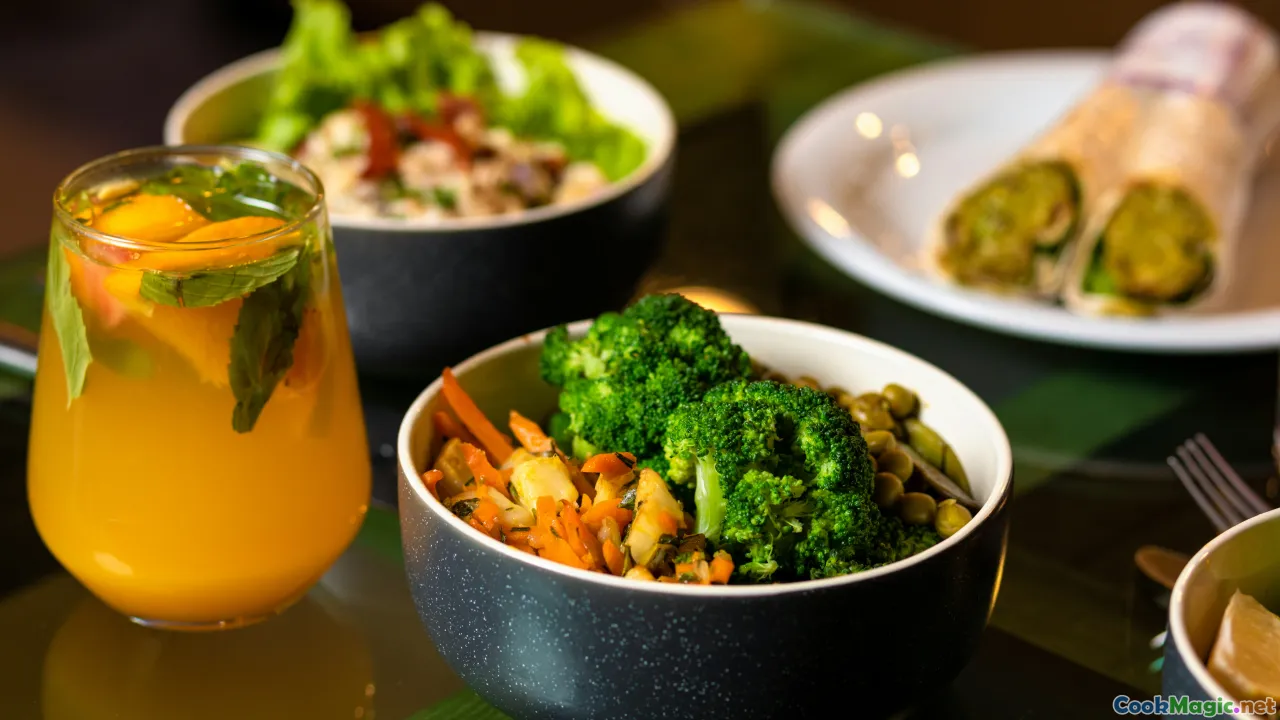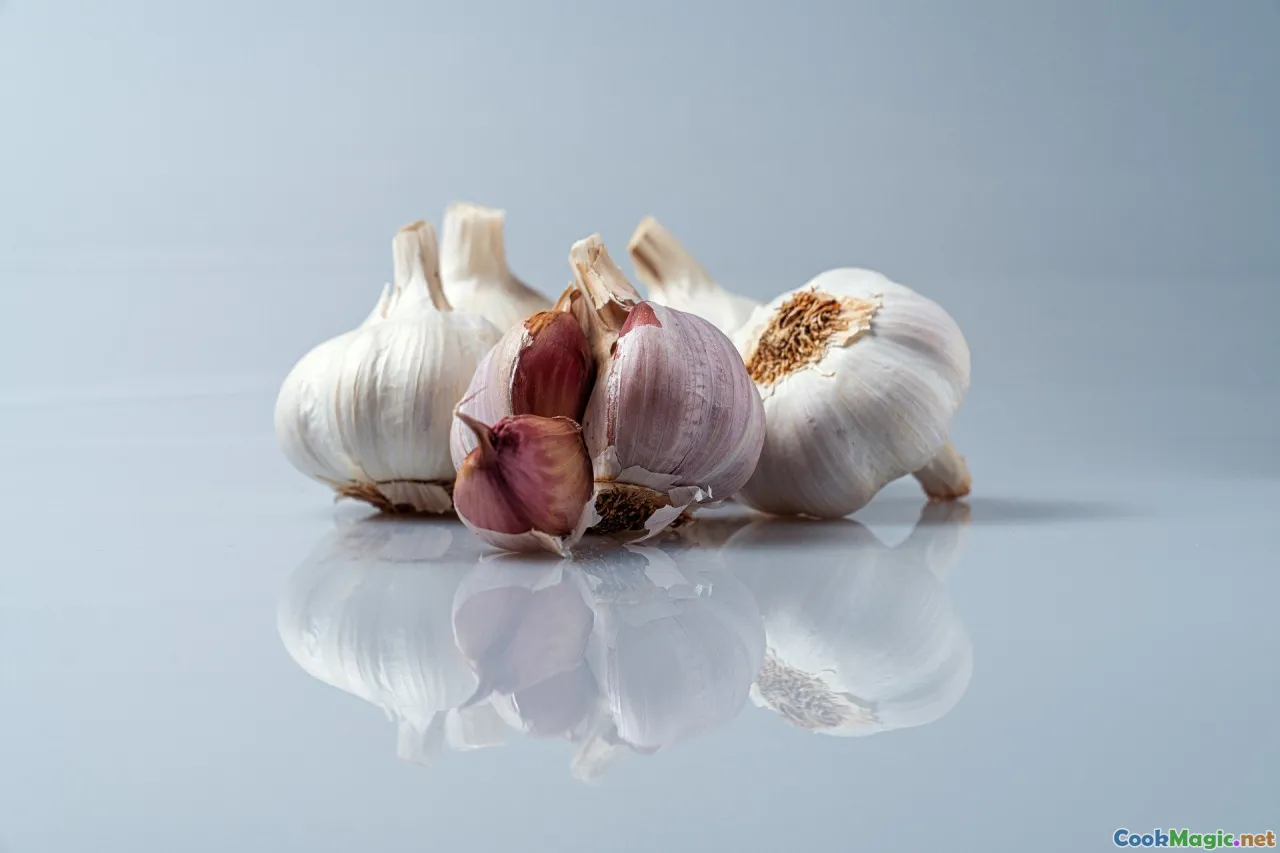Functional Foods Bringing Wellness to Your Table
40 min read Explore how functional foods—from probiotics to adaptogens—can boost wellness, with chef-friendly tips, ingredient spotlights, and cultural insights for bringing nutrition-forward dishes to everyday tables. October 15, 2025 09:07
Steam rises from a pot of barley tea on my stove, smelling faintly of roasted hazelnuts and summer hay. A mortar holds fresh turmeric root, stained my fingertips a cheerful marigold, and a pepper grinder clicks a shy percussion as I bloom the spice with olive oil. In another pan, garlicky greens wilt under a sizzle of sesame, and the room is flooded with the hum of good hunger. Lately, my kitchen has become less of a battleground for dinner and more of a tiny apothecary where flavor is the first prescription. Not because I’ve traded joy for rules, but because the most thrilling food trend is the oldest one: cooking that nourishes us beyond calories and comfort. Functional foods—ingredients and dishes chosen not only for taste but for physiological benefits—have slipped into the home kitchen with the ease of a wooden spoon resting in a pot.
If that phrase sounds clinical, don’t worry. We’re going to keep our feet in the market square and our noses in the spice bowl. We’ll walk through old stories, new science, and the everyday alchemy that happens when miso meets mushrooms or when tomatoes take a long bath in olive oil. And we’ll eat—deeply, happily—because food that loves you back is food that tastes like it means it.
What We Mean by Functional Foods, Without the Jargon

“Functional” can sound like something designed by a lab wearing corrective lenses. But in kitchens across the world, it simply means ingredients chosen for their specific benefits—digestive, immune, cognitive, or metabolic—alongside their flavor. It’s your grandmother’s broth for a chest cold, the Japanese habit of pairing natto with rice, the squeeze of lemon over iron-rich greens in Mediterranean kitchens, or the Georgian table bright with walnuts and garlic.
Some guardrails to keep it real:
- Flavor first. If it doesn’t taste good, it won’t be cooked twice.
- Cultural wisdom matters. Traditional pairings often encode scientific sense: fat-soluble vitamins with fat, spices paired for synergy, fermentation to preserve and enhance digestibility.
- Evidence, not dogma. We can honor anecdotes while noting what research supports.
A few categories of functional foods that regularly end up on my cutting board:
- Fermented foods: kimchi, sauerkraut, kefir, miso, tempeh, filmjölk—alive with microbes that may support gut diversity.
- Sea vegetables: kombu, wakame, nori—sources of iodine, minerals, and umami for salt-savvy cooking.
- Whole grains and pulses: barley, oats, buckwheat, teff, chickpeas, lentils—rich in fiber, beta-glucans, resistant starch, minerals.
- Vivid produce: berries, pomegranates, tomatoes, leafy greens, crucifers—polyphenols, vitamins, carotenoids, and glucosinolates.
- Nuts and seeds: walnuts, flax, pumpkin seeds, sesame—omega-3s, lignans, minerals, and the crunch that makes restraint impossible.
- Aromatics and spices: turmeric, garlic, ginger, black pepper, cumin—anti-oxidative compounds and the fragrance that puts a room at attention.
A Brief, Delicious History of Food as Medicine

My first memory of a “functional” dish before the word existed was in my grandmother’s kitchen on a rain-streaked afternoon: a bowl of chicken soup that smelled like dill and lemon zest, steam ghosting the window, a slick of golden fat carrying the whisper of peppercorns. She swore it was “for your lungs,” and though that claim was made with a wink, her ratio of bones to water, the long simmer, the handful of parsley and celery leaves, the squeeze of citrus—it all added up to something restorative.
Across cultures, food and wellness have always been braided:
- In Korea, kimchi crocks lined courtyard walls as both preservation and daily probiotic. Peppered with gochugaru, ginger, garlic, and salted shrimp, the alchemy is salty, spicy, and sparkling on the tongue.
- In Ethiopia and Eritrea, injera—teff batter fermented to a mellow tang—delivers iron and resistant starch beneath a streaked constellation of stews.
- In India, kitchari pairs dal and rice with ghee, cumin, and turmeric, a softly spiced hug for tender stomachs.
- In Mexico, pozole’s nixtamalized corn unlocks niacin and fortifies tortillas and stews alike; a squeeze of lime brightens the broth and helps iron absorption from frijoles.
- In Japan, miso soup wakes the body with umami and warmth; miso is paste but it feels alive, like someone is humming inside it.
- In Morocco, preserved lemons lend sunny acidity to tagines; fermented citrus peels bloom in your mouth with floral salinity.
- In Nordic kitchens, rye breads and soured dairy like filmjölk carry lactic twang into mornings long, low, and bright.
Each tradition lacquered its dishes with purpose. Before refrigeration, fermentation saved lives and coaxed flavor. Mineral-rich broths, bitter greens, herbal tonics—these weren’t trends. They were what dinner felt like.
The Science on Your Stove: Nutrients That Do Heavy Lifting

Let’s translate culinary instincts into the kinds of details that help cooks make smart choices without overthinking.
- Polyphenols and anthocyanins: Found in berries, black rice, red cabbage, purple sweet potatoes, and hibiscus (jamaica). They bring the inky blues, rubies, and magentas to your plate and are linked with antioxidant and anti-inflammatory properties. They’re often sensitive to heat and oxygen, so a mix of raw and cooked ensures we keep them vibrant.
- Lycopene: Deep in tomatoes and watermelon. Cooking tomatoes with fat enhances lycopene’s bioavailability; think slow-roasted tomatoes bathed in extra-virgin olive oil.
- Sulforaphane: A potent compound formed when myrosinase (an enzyme) in cruciferous vegetables meets glucoraphanin—think broccoli, kale, mustard greens. Chopping and letting it sit before cooking can boost formation; adding a dusting of mustard powder after cooking can reinstate the enzyme if heat subdued it. Sprouts, especially broccoli sprouts, are miniature powerhouses.
- Beta-glucans: Found in oats and barley (hello barley tea aroma still in my kitchen). They’re soluble fibers linked with supporting healthy cholesterol levels. Oats feel creamy because those fibers thicken; it’s not your imagination.
- Prebiotics and probiotics: Chicory, leeks, garlic, and onions bring inulin and fructans that feed beneficial gut microbes. Fermented foods contribute microbes themselves. Pairing the two—say, a leek and sauerkraut salad—can be a tandem bike ride for your microbiome.
- Omega-3s: In fatty fish like mackerel, sardines, and salmon, and plant sources like flax and walnuts. Gentle heat preserves delicate fats. I sous-vide salmon at 113°F (45°C) and finish with a quick blowtorch or sear for texture.
- Allicin: The sulfur compound in garlic that forms after chopping. Letting chopped garlic stand 10 minutes before cooking helps; a quick sauté keeps its warm bite.
- Vitamin C and iron: Citrus, peppers, and strawberries paired with spinach, lentils, or teff help increase non-heme iron absorption.
Cooking is a masterpiece of synergy:
- Fat helps absorb vitamins A, D, E, K and carotenoids; hence the classic of greens glossed in olive oil.
- Heat unlocks (and sometimes degrades) compounds; so cook some, leave some raw.
- Acids brighten and balance bitterness; an orange segment tossed into a kale salad isn’t garnish, it’s tactic.
Practical tweaks that change the nutrient score without changing the vibe:
- Roast cherry tomatoes slowly with olive oil and a clove of garlic; use the pooling oils to dress beans later.
- Toast whole spices to activate aromatic oils and grind just before use; your nose will tell you when they’re ready.
- Slip kombu into broths for iodine and natural glutamates; remove before boiling to keep flavors clean.
- Pressure-cook beans to reduce some anti-nutrients and make them weeknight-fast; stir in miso at the end to keep its microbial character.
A Chef’s Pantry for Functional Cooking

My pantry has acquired a few treasures that pull more than their weight. A tour, with notes like I’d give a line cook:
- Miso (white, red, barley): More than soup. Whisk into salad dressings, rub onto eggplant for broiling, or fold into butter for seared mushrooms. Keep refrigerated; it’s a living paste.
- Kimchi and sauerkraut: I buy from small producers when I can—kimchi with fat stalks of napa and little bursts of softened garlic, kraut with caraway that snaps. Load them onto grain bowls at the end to avoid killing the good microbes.
- Shio-koji: A salted rice koji marinade that turns chicken thighs silky and asparagus luminous. A few tablespoons rubbed in, 30 minutes to overnight.
- Seaweed (kombu, nori, wakame): For broths, furikake, or a snappy salad with cucumber and sesame. Iodine-rich, briny, lifesaving in bland soups.
- Whole grains: Buckwheat groats for soba or a toasted salad; teff for injera or porridge; rye berries for chew; barley for soups; amaranth for freckling into pancakes.
- Pulses: Beluga lentils that hold their shape and glisten like caviar; chickpeas for chana masala or hummus; azuki beans for sweet-savory pastes.
- Seeds and nuts: Flax (grind to unlock omega-3s), pumpkin seeds (toast with smoked paprika and lime zest), black and white sesame (gomasio on everything).
- Canned fish: Sardines in olive oil, mackerel fillets—fast lunch that tastes like the dock.
- Mushrooms: Shiitake (dried or fresh), maitake, oyster. Dried shiitake steep into a tea that smells like wood smoke and rain.
- Aromatics: Ginger nubs in the freezer, turmeric roots wrapped in a paper towel, black garlic like sweet licorice bulbs.
- Fats: Real extra-virgin olive oil (ask your market about harvest date), toasted sesame oil for finishing, ghee for high-heat and deep nutty notes.
- Sweeteners with personality: Date syrup, raw honey (try buckwheat honey—dark, molassesy), jaggery.
Storage tip: Treat your pantry like a spice bazaar—rotate, label, keep light and heat low. Seeds go rancid quickly; refrigerate flax and walnuts. Olive oil likes darkness and cool.
Dishes That Heal Without Announcing It

Here are dishes I cook for friends who don’t want a lecture, only dinner that leaves them humming. Consider these templates rather than rigid recipes.
- Roasted Cauliflower with Tahini, Pomegranate, and Black Garlic
What it tastes like: Caramelized edges that snap, sesame cream that swoons, pops of jeweled pomegranate, and black garlic’s balsamic whisper.
- Toss florets with olive oil, cumin, and crushed coriander. Roast at 450°F (230°C) until charred in spots, about 25 minutes.
- Blitz tahini with lemon juice, grated garlic (let it rest 10 minutes first), warm water, salt, and a teaspoon of honey until plush.
- Stir chopped black garlic into the dressing. It melts like a secret.
- Plate cauliflower, drizzle tahini, rain pomegranate arils and toasted pumpkin seeds, finish with parsley.
Function in the background: Fiber and prebiotics from cauliflower; sesame’s calcium; polyphenols from pomegranate; allicin magic from garlic.
- Soba with Shio-Koji Salmon and Charred Broccolini
What it tastes like: Buckwheat’s nutty breath, salmon as tender as custard, broccolini’s blistered green bite.
- Marinate salmon filets in shio-koji for 1–2 hours. Rinse lightly, pat dry.
- Sear salmon skin-side down, then bake gently at 275°F (135°C) until just set.
- Char broccolini in a hot pan; splash with tamari and a squeeze of yuzu or lemon.
- Cook 100% buckwheat soba, rinse, toss with sesame oil, rice vinegar, and scallions.
- Dust the plate with toasted nori flakes and sesame.
Function in the background: Omega-3s preserved by gentle cooking; broccoli family’s sulforaphane (add a pinch of mustard powder after cooking for enzyme support); buckwheat’s rutin and fiber.
- Teff Injera Tacos with Berbere Lentils and Sauerkraut
What it tastes like: Tang and spice balancing in a midair handshake; lentils smoky-cinnamon from berbere; cool kraut slice.
- Make a quick injera batter with teff flour, water, and a pinch of yeast; let it bubble and sour 24–48 hours.
- Simmer lentils with onions, garlic, and berbere; finish with a spoon of tomato paste and a drizzle of olive oil.
- Cook injera as thin crepes; swirl a batter to form a galaxy of eyes.
- Top with lentils, shredded cabbage, and a spoon of sauerkraut. Cilantro for perfume.
Function in the background: Iron and resistant starch from teff; lentil fiber; fermented cabbage’s lactic snap.
- Golden Bone Broth Congee with Soft Egg and Scallions
What it tastes like: Silk on silk—rice starch and collagen riding umami, ginger fragrancing every spoon.
- Simmer chicken bones with ginger coins, a strip of kombu (remove before boiling), scallion roots, and a drizzle of rice vinegar for 6–8 hours.
- Strain, add short-grain rice, cook low until grains surrender completely.
- Ladle into bowls, add a soft egg, scallions, black pepper, and a few drops of sesame oil. Optional: spoon of miso at the table.
Function in the background: Minerals from bones; gelatin lending body; kombu’s iodine; egg’s protein.
- Miso-Mushroom and Barley Risotto with Lemon
What it tastes like: Dark forest and sunshine: shiitake’s woodsiness, barley’s chew, a lemon’s clean chord.
- Sauté mushrooms in batches until deeply browned; set aside.
- Toast pearled barley in the pan, deglaze with sake or white wine.
- Add hot mushroom-kombu broth gradually, stirring. Finish with a spoon of white miso off heat, lemon zest, and a handful of chives.
Function in the background: Beta-glucans in barley; glutamates from miso and mushrooms; zest’s citrus oils.
- Turmeric-Orange Olive Oil Cake with Kefir
What it tastes like: Sunshine wearing a cardigan; tender crumb, floral, a little peppery, glowing with saffron-tinted crumb.
- Whisk eggs, sugar, olive oil, kefir, orange zest, and grated fresh turmeric (careful: it stains). Fold in flour, almond meal, baking powder, and a pinch of black pepper.
- Bake until the kitchen smells like a confessional where citrus has confessed everything.
- Drizzle with honey-lemon syrup while warm; top with pistachios.
Function in the background: Turmeric’s curcuminoids aided by pepper and fat; kefir’s tang; nuts for healthy fats.
- Kimchi Gazpacho with Grilled Shrimp
What it tastes like: A Spanish vacation detouring through Seoul—sun-ripe tomatoes, icy-cold heat, lactic zing.
- Blend ripe tomatoes, cucumber, garlic, olive oil, a handful of kimchi, and a splash of sherry vinegar. Chill.
- Grill shrimp brushed with sesame oil and a pinch of gochugaru.
- Ladle into bowls; float shrimp, top with chives and a few drops of sesame oil.
Function in the background: Lycopene from tomatoes enriched by oil; probiotic complexity from kimchi; lean protein.
- Mango-Turmeric Kefir Lassi Pops
What it tastes like: A street corner in Mumbai on a hot day—silky, perfumed, sweet-sour with a peppery exhale.
- Blend mango, kefir, turmeric, honey, and a pinch of cardamom. Freshly grind black pepper.
- Freeze in molds; dip in melted dark chocolate and sesame seeds if you’re feeling extra.
Function in the background: Fermented dairy, spices’ synergy, fruit fiber.
Fermentation: Bubbles with Benefits

The first time I lifted the lid off a jar of fermenting carrots scented with dill and garlic, the brine smelled alive—like a garden murmuring under rain. Fermentation is choreography: salt, time, temperature, and microbes moving together.
Cultures have been dancing this dance forever:
- Korea: Onnuri markets in Seoul sell clay onggi pots that keep kimchi cool and breathing; cabbage crunches and fizzes when you bite.
- Japan: Nukazuke (rice bran pickles) taste like the memory of a rice field; you bury vegetables in the fragrant bed like treasure.
- Ethiopia: Teff starters smell like ripe apples and stone; injera batter maps the universe in bubbles.
- Mexico: Tejate in Oaxaca—cacao, mamey pits, roasted corn—has a slightly fermented whisper beneath its white foam.
- Ghana: Kenkey’s fermented maize dough, unwrapped from plantain leaves, is tart and satisfying.
Safety and success tips that keep your jars cheerful:
- Salt by percentage: 2–3% by weight of vegetables (20–30 g per liter of water). Use a scale and your brine won’t guess.
- Submerge everything: Air is the enemy; use a bag of brine or a weight to keep vegetables below the surface.
- Clean jars, not sterile neurosis: Wash well; let microbes do their job.
- Temperature: 65–72°F (18–22°C) is a sweet spot for lacto-fermentation; cooler equals slower, warmer equals wilder.
- Taste daily: Ferments are conversations. When the acidity is bright and the crunch is your crunch, move to the fridge.
Serving ferments so their characters shine:
- Think of kimchi as a seasoning—chop and fold into brown butter for a kimchi beurre monté over seared fish.
- Brighten fatty dishes: A spoon of sauerkraut on pierogi, or pickled carrots with pork belly.
- Pair with bitterness: Endives and preserved lemon, radicchio and pickled cherries, all singing in harmony.
Morning Rituals: Functional Breakfasts from Around the World

My morning table has traveled more countries than my passport. Breakfast is a simple place to build rituals that carry you kindly through a day.
- Japan: Warm rice with natto. Natto’s stringy, funky pull and mustard heat are not shy, but the soybean’s sticky exudate is rich in nattokinase. Top with scallions, soy sauce, and a raw egg yolk if your eggs are very fresh. It tastes like strength in a small bowl.
- Sweden: Filmjölk with cloudberries if you can find them; more likely, blueberries and a rye crumble scented with cardamom. The dairy’s tang is gentle, like a polite handshake. Scatter pumpkin seeds for crunch.
- India: Sprouted moong chilla—savory pancakes with green chilies, ginger, and cilantro. The sprouting lends sweetness and softens the legume’s edge. Serve with tomato chutney and a spoon of raita.
- Mexico: Atole de avena—thickened oatmeal drink with cinnamon, piloncillo (or jaggery), and a few cacao nibs tossed in for bite. It’s like sipping a hug.
- Peru: Quinoa porridge with orange peel, star anise, and a swirl of raw honey. Toast the quinoa first to perfume the kitchen.
- Morocco: Bessara, a warm fava bean puree with garlic and cumin, flooded with green-gold olive oil. Tear bread, scoop, repeat.
Each bowl is a doorway: fiber-rich grains, fermented dairy, legumes uplifted by spice. None of it reads as “healthy” on the plate; it reads as breakfast that actually tastes like waking up.
Smart Swaps and Sneaky Boosts

Sometimes wellness sneaks in through tiny doors. Here are swaps I make that feel like wins, not compromises.
- Grain glow-ups: Use rye or barley instead of white rice in pilafs for chew and beta-glucans. Or mix 50:50 with rice for the best of both textures.
- Pulse power: Blend cooked white beans into soups for creaminess without cream; nobody notices, everybody asks for the recipe.
- Stock upgrade: A strip of kombu and a handful of dried shiitake turn water into broth in 30 minutes. Keep the kombu under a simmer to avoid bitterness.
- Spice synergy: Turmeric always gets black pepper and a fat (oil, ghee, coconut milk). Mustard seeds bloom in oil, cumin seeds perfume rice.
- Citrus with greens: Add orange segments to kale salad not for color but to usher iron across the digestive threshold.
- Smart sweet: Date syrup on yogurt tastes like caramel with a purpose. Pair with walnuts for a classic bittersweet duet.
- Crisp without deep fry: Air-fry cauliflower tossed in chickpea flour and spices; it emerges sizzling and bronzed, ready for lemon.
- Sauces with benefits: Whip tahini with roasted garlic and lemon; swap half the mayo for kefir or yogurt in dressings.
Functional Menus for a Week

Monday
- Lunch: Buckwheat soba salad with cucumbers, radishes, shredded nori, and sesame-tamari dressing. A cup of genmaicha (toasted rice green tea) that smells like rain on hot stone.
- Dinner: Miso-mushroom barley risotto. Side of charred broccolini with lemon and chili flakes.
- Snack: Dark chocolate (70%+) with toasted almonds.
Tuesday
- Lunch: Sardine toasts on rye with preserved lemon gremolata and arugula. A small bowl of kimchi on the side.
- Dinner: Shio-koji chicken thighs grilled until lacquered. Cabbage slaw with tahini, apple, and sesame. Barley tea over ice.
- Snack: Kefir with a drizzle of date syrup and cracked black pepper.
Wednesday
- Lunch: Lentil salad with roasted carrots, cumin, pomegranate molasses, and mint. Sliced oranges for dessert.
- Dinner: Golden congee with soft egg, scallions, and sesame oil. Quick cucumber-wakame salad.
- Snack: Pear with walnut butter.
Thursday
- Lunch: Teff injera tacos with berbere lentils and sauerkraut. Agua de jamaica (hibiscus) lightly sweetened, so bright it’s almost singing.
- Dinner: Slow-roasted tomatoes with garlic and olive oil over chickpea pasta, showered in basil. Side of bitter greens with anchovy dressing.
- Snack: Pumpkin seeds toasted with lime zest and smoked paprika.
Friday
- Lunch: Quinoa bowl with avocado, roasted beets, orange segments, and cumin yogurt. Sprinkle of dukkah.
- Dinner: Sous-vide salmon, finished with a quick sear, served with black rice and sesame spinach. Glass of dry cider.
- Snack: Miso broth with scallions in a mug.
Saturday
- Brunch: Sprouted moong chilla stuffed with paneer and spinach. Mango-turmeric kefir lassi on the side.
- Dinner: Kimchi gazpacho with grilled shrimp; sourdough with cultured butter and flaky salt.
- Snack: Apple with aged cheddar.
Sunday
- Lunch: Bessara with olive oil swirl, warm flatbread, and olives. Mint tea.
- Dinner: Roasted cauliflower with tahini, pomegranate, and black garlic; herby bulgur with pistachios; salad of tomatoes and cucumbers.
- Snack: Yogurt with cacao nibs and honey.
This plan is a suggestion, not a syllabus. Swap according to season: asparagus for broccolini in spring, roasted squash for carrots in fall, berries for citrus in summer. The point is a rhythm—fermented brightness, whole grains’ ballast, pulses’ steady hand, fish’s velvet.
Sourcing with Intention: Markets, Makers, and Seasonality

In Tel Aviv’s Levinsky Market, I once tucked a packet of Persian dried limes into my basket, their blackened skins rattling like pebbles. At a small fishmonger near the port, sardines lay so fresh they looked almost conversational. Functional cooking begins when you choose where to spend your money.
- Farmers’ markets: Ask the person who pulled carrots from the ground what variety they planted. Seek out kale leaves so dark they gleam. Taste tomatoes. Buy small, often, and share a smile.
- Fishmongers: Look for eyes clear as glass, gills bright, flesh firm. Don’t be shy about sardines and mackerel—they’re economical and rich in omega-3s.
- Specialty grocers: Korean markets land you impeccable gochugaru and onggi; Japanese grocers stock shio-koji, kombu, and natto; Ethiopian markets carry teff with terroir.
- Olive oil: Track harvest date and mill; early harvest oils are peppery, late harvest softer. Choose real extra-virgin from producers you trust.
- Honey: Try varietals—buckwheat, chestnut, orange blossom. Each has a personality (buckwheat is a baritone). Raw honey is a flavor time capsule.
- Sustainable choices: Seaweed requires no fresh water; mussels filter the sea. Upcycled grains (spent barley flour) turn waste into bread with a backstory.
Buying well is pleasure and politics—supporting small makers who ferment in crocks and roast with patience. You’re not just feeding yourself; you’re sustaining a landscape of flavor.
When Tradition Meets Tech: Biohacking the Pantry

I love a clay pot and a digital thermometer with equal fervor. Tools can help keep nutrients at the table while making dinner easier.
- Sprouting: A simple jar and a mesh lid yield sprouted broccoli seeds that crackle with sulforaphane potential. Toss into salads with lemon and olive oil.
- Pressure cooker: Converts dry beans to velvety stews in under an hour; reduces some lectins and phytic acid and keeps your week moving.
- Instant Pot yogurt: Heat, cool, inoculate, incubate—set and forget. Combine cow’s milk with a splash of goat’s for complexity.
- Dehydrator: Make your own koji rice if you’re adventurous, or dry citrus peels and chilies for custom spice blends that smell like your hands made them (because they did).
- Sous-vide: Cook salmon low and slow to preserve delicate omega-3s, then sear briefly for that sacred crust.
- Air-fryer: Roast chickpeas until they crunch like pebbles; dust with za’atar for a snack you’ll hide from yourself.
New ingredients on the innovation shelf:
- Moringa leaf powder for green sauces with peppery zip, like a more earnest parsley.
- Nutritional yeast for an umami cloud on popcorn or pasta; it tastes like toasted cheese.
- Inulin syrup from chicory root to sweeten with prebiotic intent.
- Chlorella and spirulina for smoothies (go easy—the ocean can take over).
- Lupin tempeh or upcycled barley protein products from startups turning waste into dinner.
But a caution: remember the joy. A kitchen that feels like a lab can shut down the appetite. Let gadgets be helpful background actors, not the star.
Cultural Respect and Flavor First

It is tempting in the glow of trends to treat the world’s cuisines like a self-serve bar. But functional foods live in context. When I cook kimchi pancakes, I hear my friend Minji recalling her mother’s winter kimjang, red hands expertly salting cabbage—infinite patience in every rub. When I make kitchari, I credit my Delhi host who stirred ghee until it smelled like toffee and sunshine.
Respect looks like:
- Learning and naming: Gochugaru is not “Korean chili powder.” It is gochugaru, with fruitiness and specific heat.
- Supporting makers: Buy miso from small Japanese or Japanese-American producers, injera from Ethiopian bakeries, tortillas from a tortilleria that nixtamalizes.
- Staying curious: Ask questions, read, attend workshops, pay for classes. Culture is a gift, not a trend.
And always, flavor first. A beautiful ingredient will do more for your well-being than a chalky shake or a grim greens powder. If your sauce makes you close your eyes, you’re onto something.
How to Test, Observe, and Personalize

No one’s microbiome is your microbiome, and the only perfect diet is the one you can live with—and look forward to. A chef’s approach to personalization:
- Keep a food journal—not to tally calories, but to note energy, digestion, mood, and sleep. Did the barley risotto leave you buoyant or sluggish? Did the kimchi sing or shout?
- Notice texture as much as flavor. Crunch wakes palate, silk soothes nerves. Balance both across a day.
- Start low, go slow. Add fermented foods in teaspoon amounts and build up; sudden symphonies in the gut can be…attention-grabbing.
- Consider FODMAP sensitivities or allergies. Onions and garlic can be swapped for infused oils and green tops for some diners.
- Pair smartly. If beans don’t love you yet, try pressure-cooking and adding better aromatics; fold in greens and acid.
- This is culinary advice, not medical. If you have conditions or take medications, consult a professional, but keep your spoon in the soup—your palate is data.
A Final Bowl

Last winter, I made a bowl that felt like a small poem. I warmed a ladle of golden broth steeped with kombu and ginger, stirred in a handful of barley until it bloomed glossy and thick, and folded in a mound of sautéed shiitake that smelled like rain on cedar. I poached an egg until the white barely trembled and slid it into the bowl where it settled like a moon. A ribbon of kimchi brine—a chef’s shortcut to brightness—tinted the broth peach. I showered it with scallions, black sesame, and a spritz of lemon oil that rose from the surface like a sigh.
When I ate it, spoon by spoon, I thought of my grandmother’s soup, of markets and makers, of the human habit of turning necessity into something generous. The bowl was warm in my hands, the barley a polite chew, the broth glimmering, fungal and citrusy, the egg tender as forgiveness. It sustained in all the ways a bowl can: stomach, memory, curiosity.
That is the heart of functional foods on your table. Not a checklist, but a practice of care—of sourcing olives that taste like the grove, cooking fish as if it matters (because it does), letting dough breathe, and acids sparkle, and spices exhale. You can hear it in the pan when garlic hits oil and the house inhales—an ancestral yes. The wellness follows not as a promise but as a habit, a daily arrangement between flavor and attention.
Tomorrow, I’ll put on a pot of barley tea again, grind pepper till it smells citrusy, and whisk miso into a small evening soup. Not because a book told me to, but because I’ve tasted what happens when dinner is more than dinner. The pleasure is immediate. The benefits linger—the quiet kind of trend that becomes tradition, the sort that sits down beside you at the table and stays.









